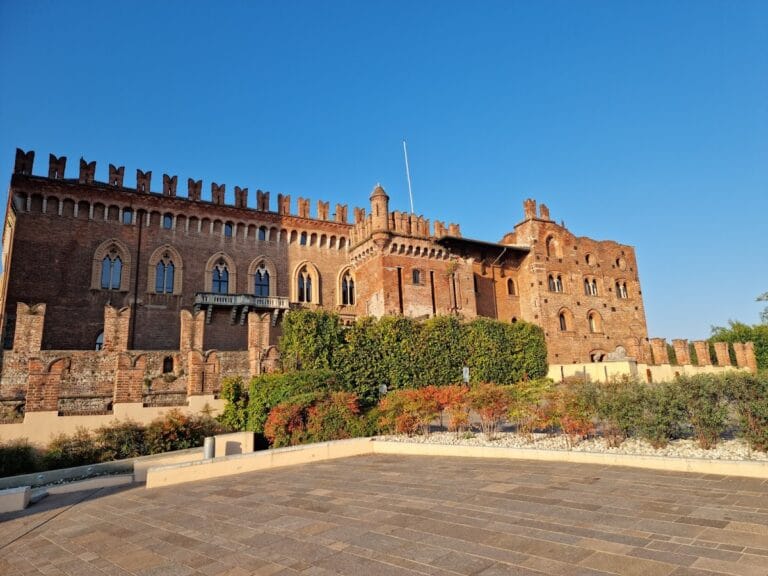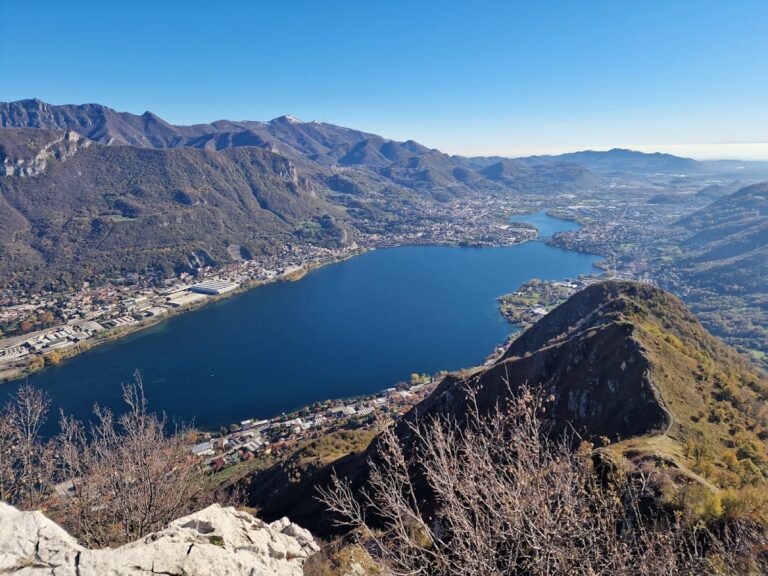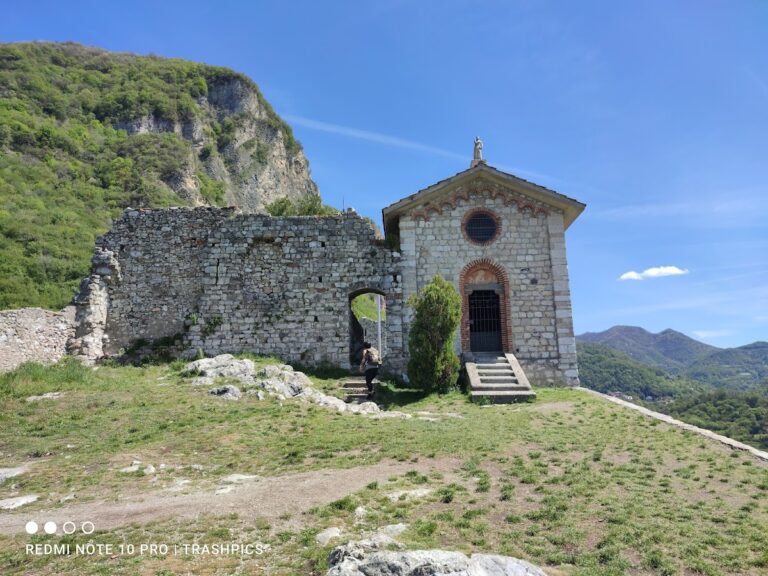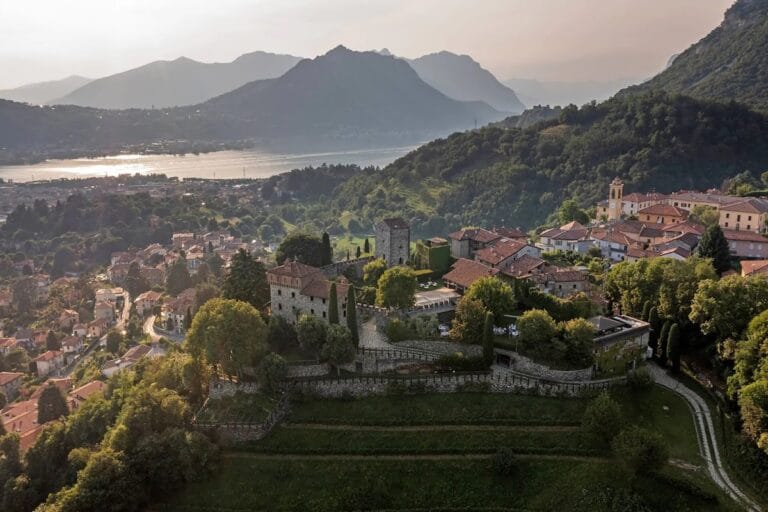Castello Baradello: A Historic Fortress Overlooking Como, Italy
Visitor Information
Google Rating: 4.3
Popularity: Low
Google Maps: View on Google Maps
Official Website: castelbaradello.com
Country: Italy
Civilization: Unclassified
Remains: Military
History
Castello Baradello is situated atop a 430-meter hill overlooking the city of Como in northern Italy. The castle stands on the site of Comum Oppidum, the earliest settlement of Como dating back to the first millennium BC, originally developed by ancient Celtic and Roman communities.
The initial fortifications of the site trace back to the Byzantine period in the 6th and 7th centuries. During this time, the castle was part of the Byzantine defensive frontier known as the Limes Byzantine, constructed to resist Lombard invasions. This strategic position controlled key routes, including the important via Regia, connecting Como to Milan and the Alpine passes to the north. In 588, the fortress fell to the Lombards, marking a significant shift in control over northern Italy. By 604, the castle is documented in the writings of the historian Giorgio of Cyprus under the name Castron Baractelia.
After several centuries of lesser prominence, Castello Baradello reemerged as a critical refuge during the conflict between the cities of Como and Milan from 1118 to 1127. Following the destruction of Como in 1127 by Milanese forces, the city allied itself with Emperor Frederick Barbarossa. Around 1158, Barbarossa contributed to restoring Como’s defensive structures, including rebuilding Castello Baradello. He resided there in 1159 and later granted the castle to the citizens of Como in 1178, cementing its role as a key defensive and administrative site in the region.
The castle is also linked to significant political events in the late 13th century. After the 1277 Battle of Desio, Napoleone della Torre, leader of the rival della Torre family, died imprisoned in a cage suspended from the castle tower. Other members of his family were held captive at Baradello as well, with some managing to escape or being released during the 1280s.
In 1335, the Visconti family, rulers of Milan who had gained control over Como, undertook restoration and enlargement of the castle. They raised the height of the tower and fortification walls, with further improvements made between 1426 and 1436. However, in 1527, Emperor Charles V ordered the dismantling of most of the castle, sparing only the main tower to prevent its use by invading French troops. Over the following centuries, the castle passed into the hands of monastic groups and eventually private owners.
In the 20th century, the castle underwent restoration efforts, notably in 1902-1903 and again in 1971 under the guidance of Professor Luigi Mario Belloni. By 1927, it became municipal property through a bequest. During World War II, the remaining tower served a military purpose, housing a Bersaglieri platoon assigned to monitor for enemy parachute landings.
Remains
Castello Baradello presents a complex layout characterized by several phases of construction spanning from the Byzantine era to the Renaissance and beyond. Its most prominent surviving structure is a massive Romanesque square tower, approximately 8.20 by 8.35 meters at its base and reaching a height near 28 meters. The tower’s lower section, nearly 20 meters tall, rests directly on the natural rock and originally exhibited Guelph-style battlements—those with flat-topped merlons—although these have not survived. An additional upper section, roughly 8 meters in height, was added later featuring Ghibelline merlons, identified by their distinctive swallowtail shape.
Surrounding the tower is a trapezoidal inner defensive wall system dating back to the 6th or 7th century. These walls measure roughly 10.4 by 13.8 meters and include seven narrow arrow slits around 1.10 meters tall. The main entrance, located on the northwest side, is a narrow opening about 1.90 meters high, which could be securely barred. The masonry here reflects a Roman building technique similar to that found in the walls of Santa Maria Rezzonico, situated on Lake Como. In later centuries, these walls were elevated and modified with Ghibelline battlements matching those added to the tower.
A subsequent outer ring of walls was built alongside the raising of the tower, accessible through a pointed-arch gate. This line of defense links to the start of the “Murata,” a long defensive wall that blocked southern access routes into Como and extended to other fortifications controlling direction toward Lecco. Elements of the castle’s walls include repurposed Roman materials, among them three Roman sarcophagi that were integrated into the construction.
Extensive restoration and archaeological work conducted in the 21st century have uncovered foundations of several additional structures within the castle complex. These include the remains of a small, single-nave chapel dedicated to St. Nicholas, measuring 5.50 by 3.04 meters and retaining its characteristic apse. A quadrangular house-tower approximately 4.40 by 4.15 meters likely served as the residence of the castellan or castle commander. There is also evidence of a vaulted covered cistern predating the tower raised by Frederick Barbarossa, used for storing water.
Further discoveries include remnants of rooms functioning as a mill and oven built during the Visconti period, intended to support the garrison’s sustenance and operations. Other spaces served as troop quarters or storage, while additional cisterns and an icehouse were constructed to manage essential supplies. These structural features illustrate the castle’s evolution from a fortified military site into a self-sustaining stronghold.
The castle occupies a commanding position, offering sweeping views over Lake Como, the surrounding Alps, and the Po Valley. In the 19th century, the Venini family added a small hexagonal tower in a neo-Gothic style and created a carriage road leading to the summit, enhancing accessibility and the castle’s visual prominence in the landscape. The square tower of Castello Baradello remains a recognized emblem of the local Parco della Spina Verde, symbolizing its historic and cultural significance.










